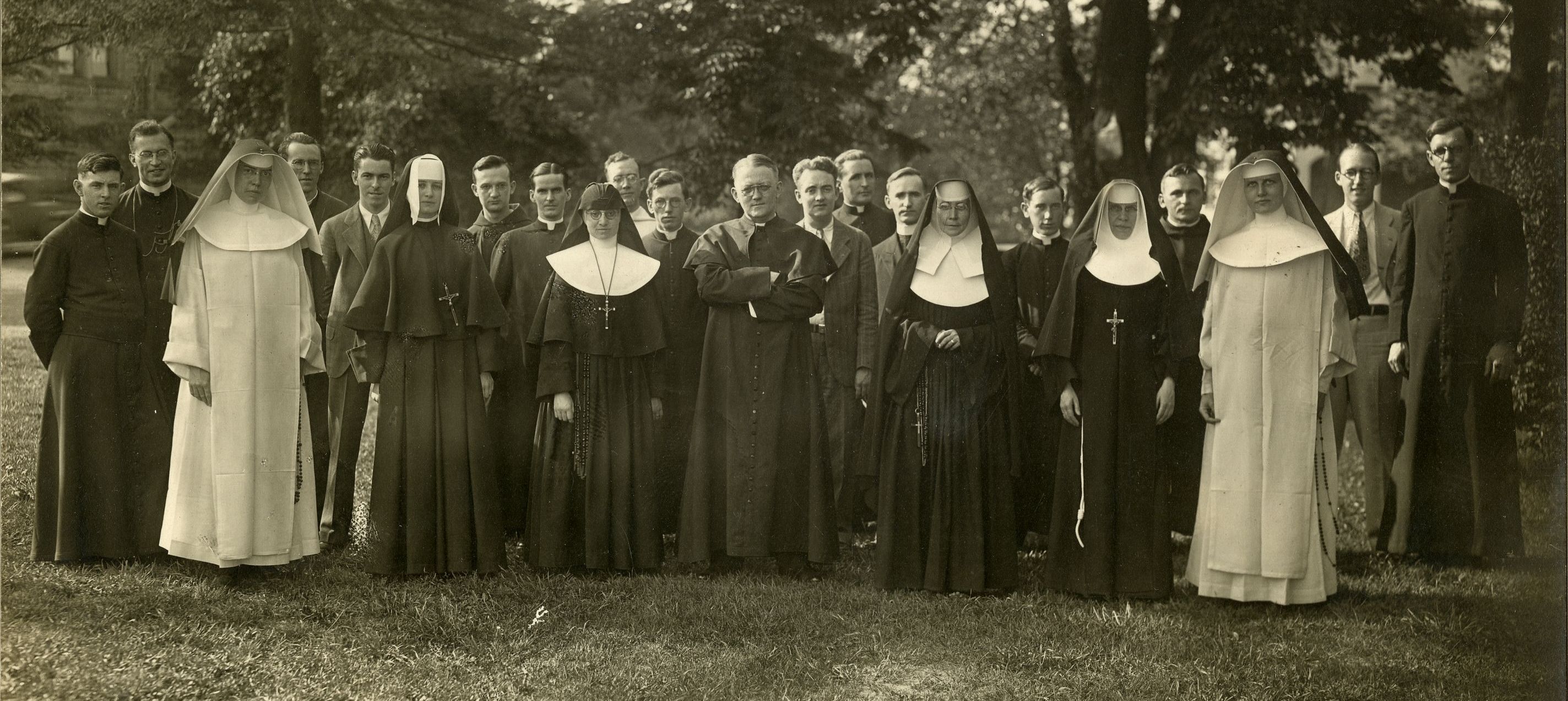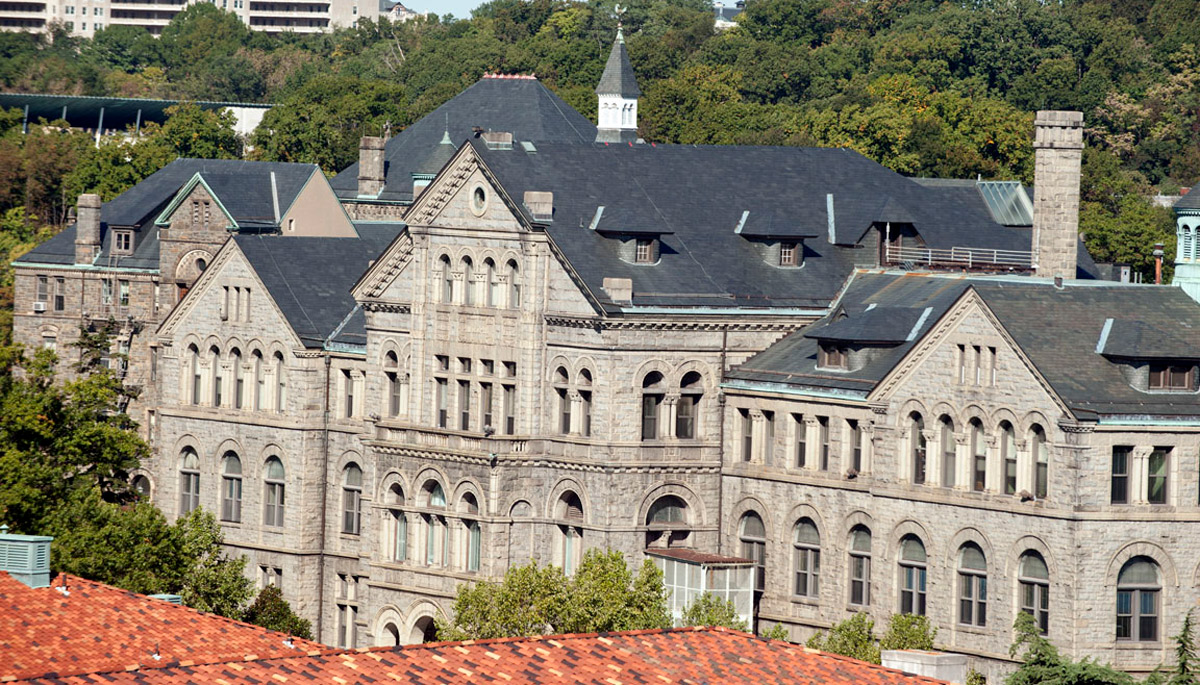History of Catholic University
The history of The Catholic University of America begins with a letter from Pope Leo XIII dated April 10, 1887.
Learn More
Beginning as early as 1892, the university offered courses on church history, but very quickly branched out to teach European and American history as well. In 1904, the Department of History was established within the School of Philosophy, and Charles Hallan McCarthy (1860-1941), Knights of Columbus Professor of American History, was appointed as its chair. In 1909, Marist Father Nicholas Aloysius Weber (1876-1969) began to offer courses in “general history.” From these foundations, faculty with specialties in ancient history, medieval, early modern, and modern European history, and the history of the United States and Latin America joined the department.
After the university restructured its academic units in 1930, its degrees and enrollment began to appear in the record under particular subject headings for the first time. In that year the department awarded its first graduate degrees specifically in history: 10 MAs and 3 PhDs (previously degrees were awarded under the heading of “Philosophy and Letters”). In that same year the department comprised 280 students and six faculty.
Since its foundation, the department’s faculty and students have lived and made history at the university, in Washington, and in the world. World Wars I and II required many to serve their country, including History Department faculty. Edward Lily (1910-1994), for example, originally a historian of colonial America, joined the Office of War Information during WWII. His studies of American psychological warfare and the history of the OWI remain unpublished, because of their classified status. At the same time, scholars escaping Nazi terror in Europe began to teach history from new perspectives. These include Friedrich Engel-Jánosi (1893-1978), a leading specialist in Vatican-Habsburg relations who taught in Catholic University's History Department from 1942 to 1959, and Heinrich Joseph Brühl (1879-1946), a historian of early-modern Europe who taught here from 1937 to 1946.
The wars changed the character of the student body, both at the university in general and in the department. While hundreds of nurses and female religious populated campus during the war years, the university received a massive influx of GIs after 1945. Harold Langley, who eventually became a professor of diplomatic history in the department, majored in history as an undergraduate after the war, thanks to the GI Bill®: in the 1980s and 1990s he regularly taught courses in the basement of Gibbons Hall, where he had lived as a student decades earlier.
In more recent decades, how historians study history has continued to evolve, enriched with new methodological approaches and new questions, in creative tension with more traditional ideas of the study of the past. Topics of research and instruction also continue to change, within the historical profession more generally and in Catholic University’s Department of History, which has remained committed to the standards of the discipline at large, while continuing to feature the history of religious experience as its centerpiece.
Catholic University’s Department of History has a proud record of counting many nationally and internationally recognized historians in its faculty ranks, ranging from church historian John Tracy Ellis (1905-1992), to British historian Catherine Ann Cline (1927-2005), to medievalist Uta-Renate Blumenthal (emerita), to US historian Leslie Woodcock Tentler (emerita).
The department is a mirror of its parent institution, always profiting from an inspiring dialogue between faith and reason, and between Church and world.
Learn more about the Department of History’s history here:
http://cuexhibits.wrlc.org/exhibits/show/cua-history-department/the-history-of-cua-history/introduction
GI Bill® is a registered trademark of the U.S. Department of Veterans Affairs (VA). More information about education benefits offered by VA is available at the official U.S. government Web site at https://www.benefits.va.gov/gibill.

The history of The Catholic University of America begins with a letter from Pope Leo XIII dated April 10, 1887.
Learn More